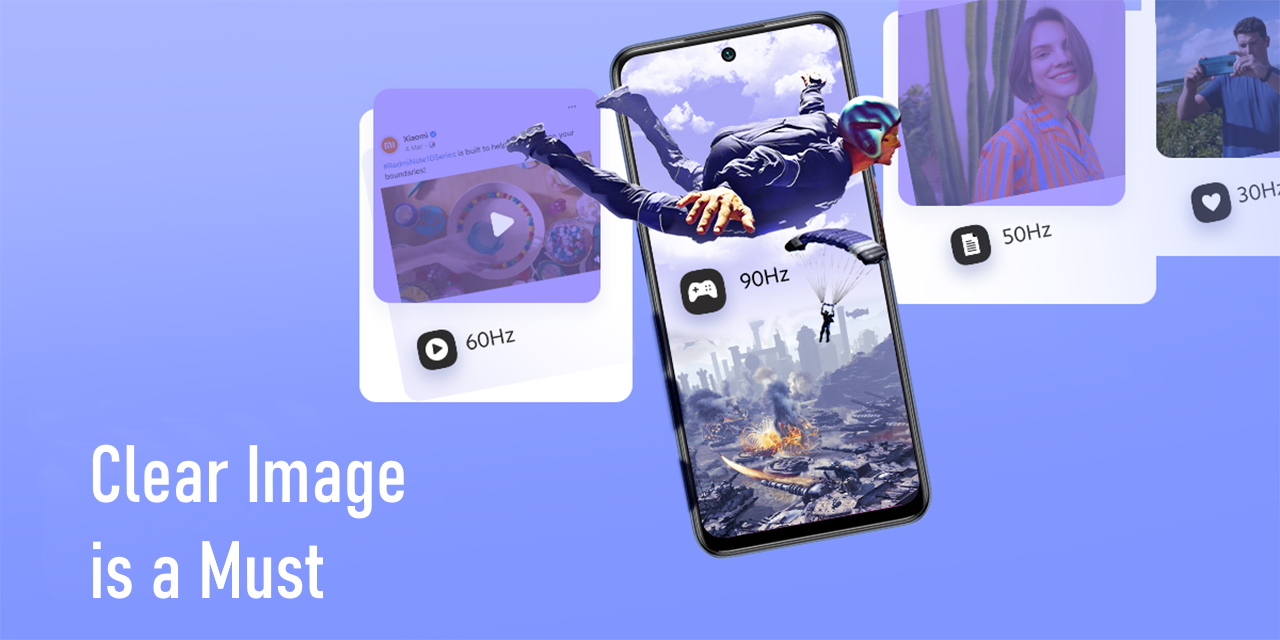I want to buy a smartphone: how to choose the right one and not to regret

If you want to buy a smartphone at a minimum price, you do not need any advice - just go to the store or online, and choose the model with the lowest price. Likewise, if you are not limited by your budget in any way, you usually have no problem with your choice either - whether it takes a lot of time to go to the same store/site and choose the latest and most expensive new product - you will never fail.
Doubts and agonies of choice begin in the middle - when there is a need to buy something not the cheapest, that will last more than one year. At the same time there is a desire to spend not too much money on a smartphone. According to statistics, the best-selling smartphones now cost from $185 - $300. In 2021, there really is a big enough choice in this price range to buy a smartphone that will meet the needs of most users. So what do you need to pay attention to when buying not the most expensive, but at the same time modern smartphone?
Smartphone Selection Criteria & Purchase Expectations
Despite the fact that the modern smartphone is a rather complex device, there are several important characteristics that affect the pleasure of using it. Some of them are clear to anyone, even an unsophisticated user, because they do not require technical knowledge (for example, the physical dimensions). Some, on the contrary, are not visible to the customer and he may not pay attention to them (e.g., the amount of RAM). If we ask a typical customer what he or she wants in a future purchase, we will almost certainly hear the same set of requirements: that the display is good, the camera takes great pictures, the battery lasts as long as possible, and nothing slows down.
These are natural needs of any customer, the main problem is that, regardless of the price of the smartphone, advertising will promise a big bright screen, an efficient processor, a great camera and long battery life. The unsophisticated buyer understands that not all smartphones can have equally good characteristics, but to understand the differences you need to go a little deeper into the subject.
Fortunately, it is not as difficult as it seems at first glance. The key characteristics when choosing a smartphone are really the display, the processor, the camera and the battery. We will focus on them in detail, and then we will go through the list of technologies, so that everyone can understand for himself which of them are important to him, and which will be superfluous.
Display: Clear Picture, With No Jerks

Screen Size
The basic characteristic of a display is its size. Traditionally, for simplicity, it is measured in diagonals (like televisions). Over the past 10 years smartphone diagonals have grown from 3.5 to 6.5 inches. Then further growth slowed down (although there are models with diagonals of 6.8-6.9 inches, but the difference is not so big).
There is a simple explanation: the bigger the screen, the more convenient it is to watch video, and put more useful information (for example, when reading the news and browsing the Internet). In the course of evolution, displays have changed their proportions and become more elongated horizontally (just like TVs). Thanks to this, they are still convenient to use, although 10 years ago the diagonal of a tablet was 7 inches (it had different proportions, but anyway), not a smartphone.
Screen Resolution
The next thing you need to pay attention to is resolution of the screen. The higher it is - the clearer the picture will be due to the smaller screen element (pixel) size. The recognized standard resolution is FullHD (1920x1080 pixels), but today's screens have even higher resolution. Although smartphones have not yet reached 4K, as in TVs (3840x2160), but the flagship models can exceed 3000 pixels horizontally. It is worth remembering that everything above FullHD - is good, everything less - a good reason to rather refuse to buy (unless we are talking about very budget models).
Screen Refresh Rate
In the last year the refresh rate is added to the important characteristics of displays. Here it affects the image flickering, like for monitors. The higher refresh rate is, the smoother and less eye-irritating picture you get. The standard frequency is 60 hertz, but if you see that a smartphone display has a screen frequency of 90 or even 120 hertz, that's a good indicator.
Layout of Font Camera
And finally, visually displays differ in the layout of front camera. All manufacturers are fighting to reduce the frame around the visible part of the image. So in recent years, technology has gone from reducing the notch as a drop-shaped element to a through hole. The hole can be aligned with the vertical axis of the screen as well as shifted to the side. There is no difference in the operation of the camera, it is just purely visual and aesthetic.
Processor: the Newer - the Better!

The processor is one of those smartphone components that we can't see - it's always hidden inside the case. We all know that processor power affects performance. But you will never see a description of a smartphone in which the manufacturer describes it as nonperforming. All as one, they are 8-core, efficient and energy saving. Suitable for gaming, social networking and web browsing. In part, all of this is true. At least because over the last decade, smartphones (and their processors) have evolved a lot and even budget models can do more and are faster than the flagship models 5 years ago.
What do 8 cores affect today?
Most processors use ARM's big.LITTLE architecture. Some of the cores are high-performance (and power-hungry). Some of them are low performance. Normally low performance cores are running, minimizing the power consumption of the processor. If an application that requires high performance (gaming, watching video) is launched, these cores are turned off and the high-performance cores are enabled. So in 8 core processors all 8 cores are never used.
How to distinguish between processors?
There are two major players in the world of mobile processors for smartphones - MediaTek and Qualcomm. These are analogous to AMD and Intel for the desktops. Qualcomm processors are believed to be more powerful. And for flagship smartphones, only they are used. The same makes MediaTek processors more attractive for mid-range and budget smartphones. The processor's freshness also matters. Technology is constantly improving, every couple of years processor manufacturers master new, more advanced technological processes (this is evidenced by the number in nanometers in the characteristics of the processor - the lower it is, the better). You can compare two different processors using a specialized service like versus.com.
Camera: MP is No Longer the Most Important

A good camera is one of the main requirements for a smartphone today. And all the manufacturers also talk about what great results you can get with a built-in camera. This is also true, but only partially. On a sunny day, you do get good pictures even when shooting with the cheapest smartphone. The difference becomes apparent when you need to take pictures indoors, in the evening, or at night in general. It is worth saying that, from the point of view of consumer characteristics, it is the camera that currently distinguishes a smartphone for $350 from a smartphone for $700. The other features of a smartphone are more difficult to estimate "by eye".
What kind of camera should a smartphone have to meet expectations?
You have to start with the number of lenses - that's where smartphone cameras come into play. Why would a smartphone need 2, 3 or 4 cameras? As a rule, they use different focal lengths, providing zoom, that is, zoom in or out of the scene in the frame. A 4-lens layout usually means that there is a primary camera, which is the default camera for taking pictures. Another one is wide-angle (this allows you to move the scene back, for example, to shoot a large group of people or when you can't move further away to fit everything in the frame). The third camera is used to zoom in. And the fourth, with a "telephoto lens", allows you to zoom in on the scene not by the focal length, but thanks to a system of lenses placed inside the body according to the "periscope" scheme.
But this is true for expensive, flagship, smartphones. In the " not-for-all-the-money-of-the-world" models, targeted at the most popular consumer, there may be fewer cameras. And they can perform other roles, for example, a separate camera can be intended for artistic background blurring. A single camera can be used for macro photography, that is, for photographing objects at extremely short distances from the lens - usually a few inches.
Camera Sensor Size
Another important characteristic of cameras is sensor size, measured in fractions of an inch, such as 1/3.4, 1/2.3 or 1/2. The bigger that number (1/2 is bigger than 1/2.3), the better (the physical size of the sensor is bigger). But usually everybody is referring to megapixels - the total number of pixels in the sensor which make up the image. The higher the number, the higher the resolution (clarity and detail) of the image. In principle, resolution directly affects the size of the photo when it is printed. But nowadays everyone looks at photos on smartphones and computers, so resolution plays more of a role in digital zoom, when the image becomes larger not due to optics, but due to the selection of a smaller fragment in the frame. A large number of megapixels also allows you to combine four adjacent pixels into one, making the picture clearer and more saturated in color. But, basically, all pictures today are processed by smart algorithms based on neural networks (what in advertising is called AI or artificial intelligence). An AI-enabled camera can recognize the type of scene and distinguish between a person, food, flowers, a cat or a dog. And it automatically selects the best shooting mode and then processes the photo for the best results.
Shooting in Poor Light
Shooting in poor light conditions is directly affected by such a characteristic as aperture ratio or aperture number. It is listed as f/2.2, f/2.0, or f/1.8. The smaller this number - the better, it means greater light transmission. When shooting video it is important to have image stabilization to prevent the inevitable hand shake. The easiest stabilization is digital (EIS - electronic image stabilization). A camera with optical image stabilization (OIS) will be an advantage when buying.
You may also like: Xiaomi Mi 11 Ultra Review
Battery: What Effects Battery Life?

Certainly, every customer wants his smartphone to last as long as possible on a single charge, and to be charged as infrequently as possible.
Factors Influencing Battery Life:
- Here it is important to understand that, first of all, battery life is the other side of performance: the higher the performance, the faster the battery dies.
- Secondly, the power consumption of the smartphone depends on the user, or rather the scenarios of his work. The biggest consumer of energy in smartphones is the screen, so the maximum brightness will drain the battery faster.
- Consumption also depends on the number of activated wireless modules: GPS, Wi-Fi, Bluetooth and NFC - each of them "bites off" a little. Therefore, the life of the smartphone on a single charge is highly dependent on the user.
The number of applications running simultaneously and their ability to update data even in the background (for example, news and notifications from social networks) plays a significant role here. Fortunately, smartphone manufacturers, together with the developers of the Android operating system, offer automatic smartphone management modes, allowing to analyse the situation and, for example, putting unused applications to sleep or removing them from RAM altogether.
By 2021, the battery capacity (measured in milliamps/hours) of most smartphones ranges from 4,500 to 5,000 mAh.
Quick Charge
What else is worth knowing about smartphone charging is support for fast charging technology (Quick Charge or QC). The newer the generation of technology, the better. And the higher the charging power listed in the specs, the faster the smartphone will charge. And the more percentage of charge it will get in the first 10-15 minutes of charging.
Memory: the More the Better

RAM
An important characteristic that inexperienced users do not pay attention to is the amount of RAM. Everyone roughly understands what the built-in storage can hold (similar to their computer), but RAM directly affects the user experience. If there isn't enough of it, apps start to lag.
In 2021 (unless you're looking for a budget solution for minimal money), it makes sense to look at memory specs starting with 4GB of RAM and 64GB of built-in storage. Accordingly, anything higher will be an advantage. Even before buying it is worth paying attention to whether there is support for flash cards (if you need it, in principle). And if so, to clarify whether it is possible to use a memory card with two SIM-cards or you will have to choose: the second SIM-card or memory card.
Additional Characteristics to Expand Your Smartphone Capabilities

What else can a smartphone have and what influences its capabilities, price, and, consequently, the customer's choice?
NFC Support
NFC support opens up opportunities for contactless payment with Google Pay, with a bank card linked to it. This is very convenient as contactless payment terminals have a high penetration rate.
User Identification
Such additional user identification tools will not be superfluous (without them using contactless payment is simply impossible). For example, face recognition or fingerprint sensor. It can even be built into the display, although in terms of usability, the best option for placing the fingerprint sensor - on the side, on the body of the smartphone. It's both faster and more convenient to use.
Bluetooth LE
If you are planning to use TWS headphones with your smartphone, it is worth checking whether the device supports Bluetooth LE specification, which provides low power consumption. Although, to be fair, it will not be only in very old models, in 2021, all the new items are able to do it.
infrared Sensor
The smartphone may also have an infrared sensor. This could be interesting for turning a smartphone into a universal remote control that allows you to manage numerous home appliances (and not only at home).
5G Support
Buying a smartphone in 2021, you can pay attention to support for 5G. it may not be such a significant, but still an advantage. And you don't have to change your smartphone when this technology becomes available everywhere.
Bonus: Why Do People Buy Flagship Smartphones?
If mid-range smartphones are so good now, why do some people buy flagship smartphones for hundreds of dollars? What is the point of it? And what do they consciously give up by choosing a cheaper smartphone?
Even if you are not planning to buy the most advanced smartphone, it is useful to know where they are better.
Camera Options
First of all, more expensive smartphones always have more camera capabilities. They can record video in 4K resolution (some even in 8K) and have a true optical zoom with variable focal length, allowing you to frame the shot before you take it, zoom in or out. Such smartphones always support optical image stabilization when shooting video and can shoot slow motion video at higher speeds, up to 960 frames per second.
Wireless Charging
They also support wireless charging (including reverse charging, where the smartphone itself can serve as a wireless charger for a watch or headphones). They can use ultra-fast charging, allowing you to fully charge your smartphone in an hour.
Ultrasonic Fingerprint Sensor
Finally, we can talk about new screen technologies, where an ultrasonic fingerprint sensor is installed under the display (and it all really works).
Face Camera
It also hides under the display. Finally, since last year, there are already foldable smartphones on the market with a flexible display.
And buyers of expensive smartphones can get all these technological innovations today. Now you too know what you need to pay attention to when buying a smartphone. That will allow you to make an informed choice and get exactly what you expect.
